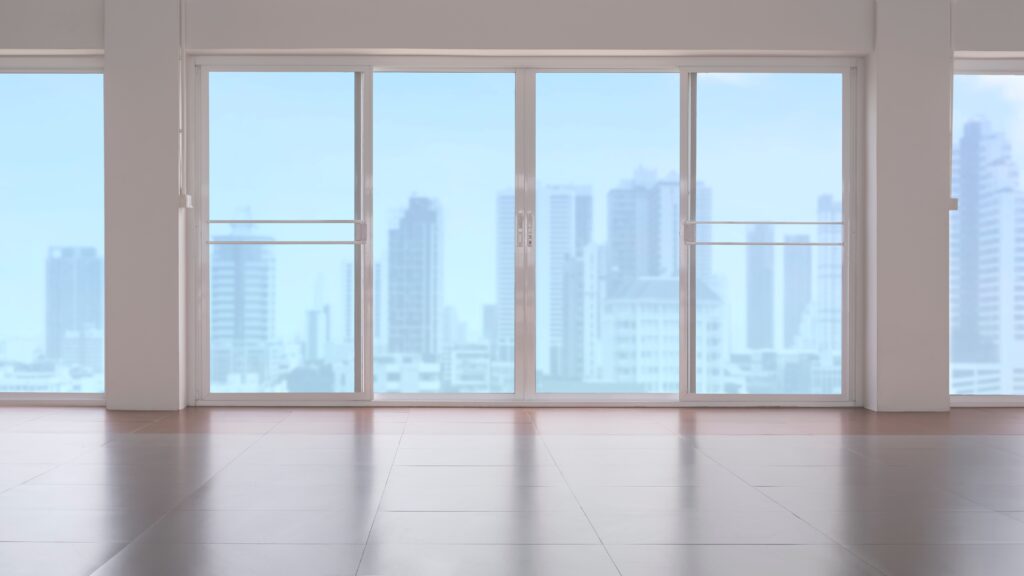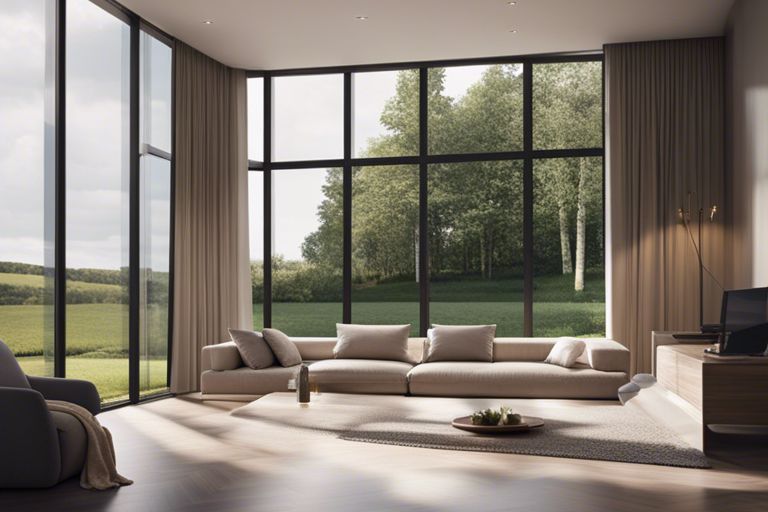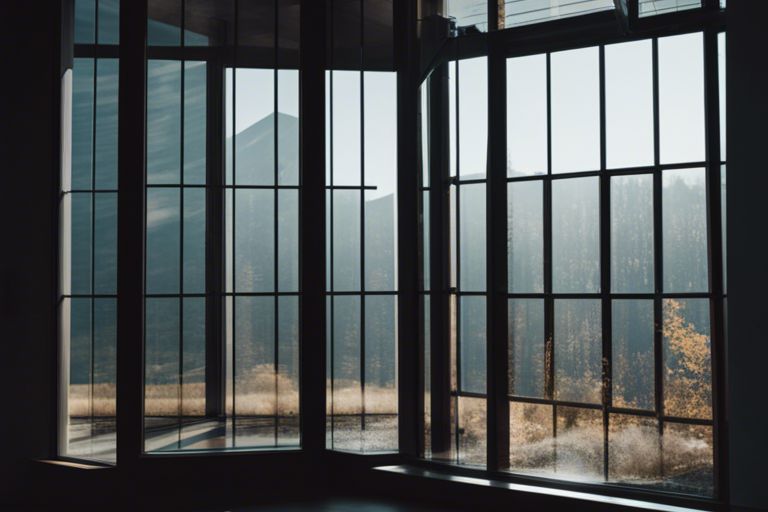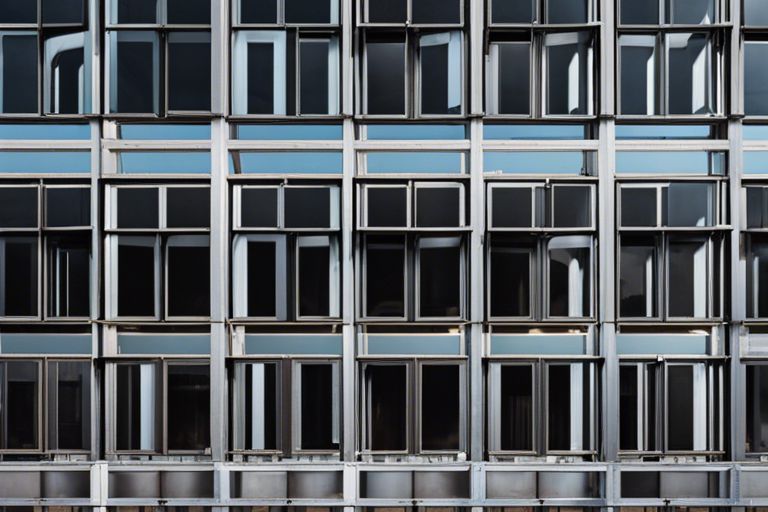In the world of architecture and interior design, decorative curtain walls have transitioned from being simply functional elements to becoming fashion statements in modern buildings. These walls, made of lightweight materials such as glass, are not only used to divide space and provide privacy but also to add aesthetic appeal to a building’s facade. Their versatility allows for natural light to filter through, creating a sense of openness and connecting interior spaces with the outside world. However, it is crucial to consider the energy efficiency and durability of curtain walls to ensure they are not only visually appealing but also sustainable and long-lasting in their purpose.
Key Takeaways:
- Enhancing aesthetic appeal: Decorative curtain walls have evolved from simply functional elements to fashionable design features that enhance the overall look of a building.
- Customisation and creativity: Advancements in technology allow for intricate designs and personalised touches, giving architects and designers the flexibility to be creative with curtain wall systems.
- Energy efficiency and sustainability: Modern decorative curtain walls not only offer visual enhancements but also contribute to energy efficiency and sustainability goals by providing improved insulation and light control.

The Evolution of Curtain Walls
Historical Overview
The concept of curtain walls dates back to the early 19th century, where they were used primarily for their practical function of providing weatherproofing for buildings. The first known curtain wall was implemented in the Crystal Palace in London, designed by Joseph Paxton for the Great Exhibition of 1851. These early curtain walls were made of iron and glass, allowing natural light to flood the interior of the building.
Over time, the aesthetic appeal of curtain walls grew, leading to their incorporation in various architectural styles, from Art Deco to Modernism. The evolution of materials and construction techniques further enhanced the design possibilities of curtain walls, transforming them from a functional necessity to a fashion statement in the world of architecture.
Technological Advancements
With the advent of structural glazing and advanced sealant technologies, curtain walls underwent a major transformation in the late 20th century. These advancements allowed for the creation of seamless glass facades that not only provided thermal insulation but also enhanced the aesthetics of buildings. The introduction of unitised curtain wall systems further streamlined the construction process, making curtain walls more cost-effective and efficient to install.
One of the most notable technological advancements in curtain walls is the integration of photovoltaic panels into the glass panels, turning them into solar energy generators. This sustainable approach not only reduces the building’s carbon footprint but also lowers energy costs in the long run, making curtain walls a practical and environmentally friendly choice for modern architecture.
The Functional Aspects of Curtain Walls
When it comes to curtain walls, functionality goes beyond just aesthetics. Understanding the functional aspects of curtain walls is crucial in order to make informed decisions when designing and installing these architectural elements.
Energy Efficiency and Sustainability
Energy efficiency and sustainability play a crucial role in the functional aspects of curtain walls. Modern curtain walls are designed to maximise natural light and reduce the need for artificial lighting, leading to reduced energy consumption. Additionally, advancements in materials and design allow for better insulation, improving the overall energy performance of a building.
Furthermore, sustainability is a key consideration in the design of curtain walls. By using recyclable materials and promoting energy conservation, curtain walls can contribute to the overall sustainability goals of a building. As environmental concerns become increasingly important, incorporating sustainable features into curtain walls is essential for modern architectural projects.
Structural Considerations and Safety
Structural considerations and safety are paramount in the design and implementation of curtain walls. The structural integrity of a curtain wall is essential to ensure the safety of the building’s occupants and the surrounding environment. Proper engineering and rigorous testing are necessary to meet safety standards and regulations.
Additionally, the weight and wind resistance of curtain walls need to be carefully calculated to prevent any potential hazards. Ensuring that the curtain wall can withstand various weather conditions and external forces is crucial for the long-term stability and safety of the building.

Aesthetic Developments in Curtain Wall Design
Curtain walls have evolved from being purely functional elements of a building’s facade to becoming a key component of its aesthetic appeal. Modern advancements in design have allowed architects to push the boundaries of creativity and innovation when it comes to curtain wall systems.
Materials and Textures
The use of innovative materials such as glass, metal, and composite panels has revolutionised the design possibilities for curtain walls. These materials can be customised to create a variety of textures, finishes, and colours, giving architects the freedom to experiment with different visual effects.
Additionally, advancements in manufacturing techniques have made it possible to incorporate complex patterns and textures into curtain wall design. This has enabled architects to create visually striking facades that not only enhance the overall aesthetics of a building but also reflect its unique identity and character.
Integration with Architectural Styles
One of the most exciting developments in curtain wall design is its seamless integration with various architectural styles. Whether it’s blending in with a historic building or standing out in a modern urban landscape, curtain walls can be tailored to complement the overall design vision of a project.
Architectural styles such as minimalism, brutalism, and postmodernism have all embraced the use of curtain walls to achieve their distinctive looks. The adaptability of curtain wall systems allows architects to realise their design aspirations and create buildings that are not only aesthetically pleasing but also functionally efficient.
Customization and Trends in Curtain Wall Decor
When it comes to curtain walls, the ability to customise and follow trends is key to creating a statement piece for any building. From unique designs to intricate details, the possibilities are endless when it comes to personalising curtain walls.
The Role of Colour and Pattern
Colour and pattern play a crucial role in transforming a basic curtain wall into a striking architectural feature. Bold colours can make a building stand out, while intricate patterns can add depth and texture to the facade. Mixing and matching different hues and designs allows for endless creative possibilities and enables architects to tailor the look to suit the building’s aesthetic.
Interactive and Dynamic Facades
Interactive and dynamic facades are gaining popularity as technology advances and architects seek to create more engaging building exteriors. These facades incorporate moving parts, responsive elements, and innovative materials to interact with the environment and occupants. They not only enhance the visual appeal of the building but also offer functional benefits such as sun shading, ventilation control, and energy efficiency.
By integrating technology and design, interactive and dynamic facades blur the lines between architecture and art, pushing boundaries and redefining traditional notions of building exteriors.

Decorative Curtain Walls – From Function to Fashion
In a nutshell, decorative curtain walls have evolved from serving a purely functional purpose to becoming a significant element in architectural design, blending function with fashion. These versatile structures not only provide environmental benefits such as energy efficiency and daylighting but also add aesthetic value to buildings, enhancing their overall appearance. As technology advances, the possibilities for innovative designs and materials in decorative curtain walls continue to expand, allowing architects and designers to create striking facades that reflect both style and sustainability. With an increasing focus on eco-friendly and visually appealing buildings, decorative curtain walls are set to play a crucial role in shaping the future of architectural design.
FAQ
Q: What are decorative curtain walls?
A: Decorative curtain walls are non-structural cladding systems that are installed on the exterior of buildings for aesthetic purposes. They are designed to enhance the appearance of the building and can be customised to suit various design requirements.
Q: What materials are commonly used for decorative curtain walls?
A: Common materials used for decorative curtain walls include glass, metal, stone, and composite materials. Each material offers unique visual effects and properties, allowing architects and designers to create customised and visually striking facades.
Q: How do decorative curtain walls combine both function and fashion?
A: Decorative curtain walls serve both functional and aesthetic purposes by providing weather protection, thermal insulation, and soundproofing for buildings, while also enhancing their visual appeal. They allow natural light into the building, improve energy efficiency, and create striking architectural features that contribute to the overall design concept.






